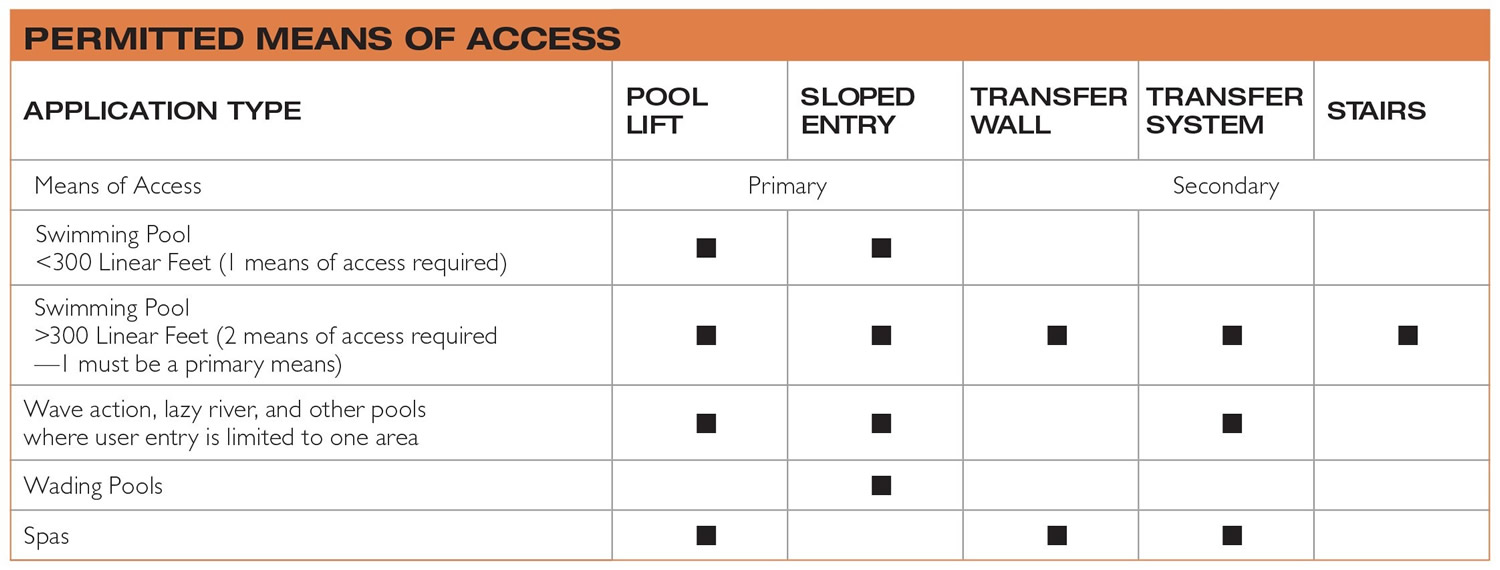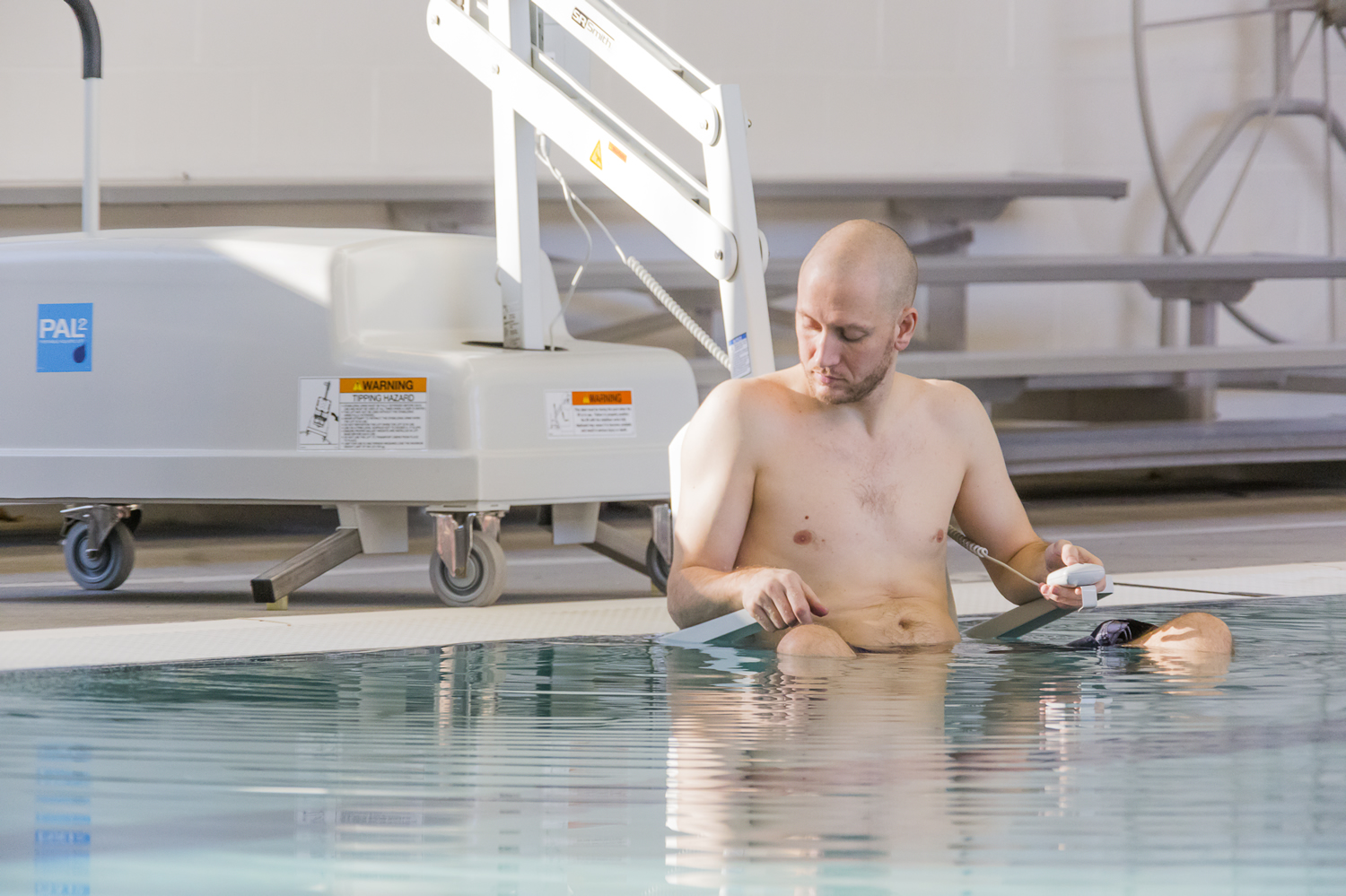Twenty–three years after President George H. W. Bush signed the Americans with Disabilities Act (ADA), an expansion of that law addressing accessibility for aquatic facilities went into effect on January 31, 2013. Although many facilities have embraced the need for accessibility, there are many public aquatic facilities that are still not in compliance.
Let’s review the requirements. The ADA Accessibility Guidelines stipulate that any pool with under 300 linear feet of pool wall must provide at least one means of access – either a pool lift or sloped entry. A pool that has over 300 linear feet of pool wall must provide two means of access, the first being either a pool lift or sloped entry. The second means of access to large pools can be any of five designated means: pool lifts, sloped entries, transfer walls, transfer systems or accessible pool stairs. ADA guidelines require a means of access for every body of water – swimming pools as well as spas, wading pools and lazy rivers.

Pool lifts are commonly selected as the primary means of access because they are the most flexible and least expensive means of access. They also require only slight modifications to the pool deck, depending on the type of pool lift selected. Both fixed-portable and anchored pool lifts can be removed when they may interfere with an activity such as a swim meet or water polo competition.

It is essential to make sure that the features of a particular pool lift are compatible with your pool’s design (gutter configuration, etc.) before selecting the brand and model that works best for your facility. ADA compliant pool lifts must be capable of independent operation and be located where the water level is no deeper than 48 inches, and must have a lifting capacity of at least 300 pounds. Pool lift seats must be a minimum of 16 inches wide and must be positioned at least 16 inches above the pool deck to facilitate transfers. Additionally, the lift must submerge the top of the seat a minimum of 18 inches below the water level and be equipped with foot rests. ADA guidelines are very specific regarding the amount of clear deck space required around the lift to facilitate transfers. Do your research to ensure you select an ADA-compliant pool lift that meets all necessary requirements.
Making sure your lift is operational at all times the pool is open to the general public is another ADA requirement. Pool lifts are machines that require more attention than most other deck equipment. Familiarize yourself with the manufacturer’s product manual for specific maintenance suggestions. Keeping an extra charged battery on hand is always a good idea.
As our society ages, the need for safe and accessible swimming pools also increases. The Americans with Disabilities Act helps ensure that every American is able to enjoy the benefits of getting into the pool.
For more information on aquatic accessibility, please contact the U.S. Access Board, the APSP or S.R.Smith.

